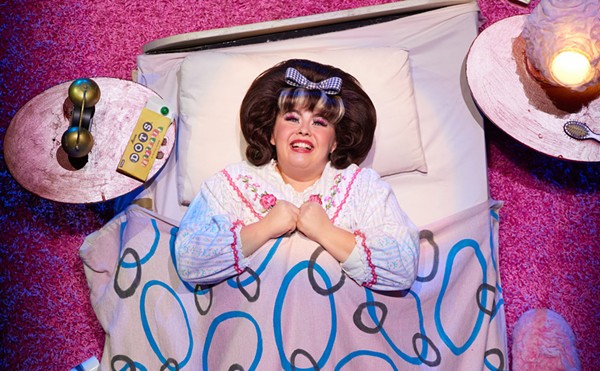The brand, Emeka! was born of the artistic and entrepreneurial spirit of Emeka Okoro. In his art, Emeka draws heavily from his Nigerian roots and boldly displays the pulsating, multi-colored traditions of his country. His insatiable creativity led him to convert his paintings into rugs, and he has recently dabbled in designing velvet slippers, cuff links, and T-shirts, all inspired by the 50th anniversary of Nigerian independence. The blend of rigid structure and the unbridled zest for life portrayed in Okoro’s paintings is a feast for the eyes, and the story behind the art twines the life of artist and viewer together. “As you move towards your journey, wherever you are, you will find people who will enable you to achieve your ultimate dream,” he said. “My ultimate dream is to continue to create as long as I live, wherever I am, whatever that is.” We spoke to Okoro as he prepared for his San Antonio debut, opening on August 13 at The Bright Shawl Gallery.
When did you first come to the U.S. and to San Antonio?
I came to the U.S. in 1985 on a scholarship to attend a prep school in New Mexico at the Armand Hammer United World College, a school founded by King Charles’s brother in order to promote international understanding. I later moved to Charlotte to work for Bank of America, and now work in Competitive Intelligence at USAA. I like San Antonio because of the similarities between Latin culture and Nigerian culture … family, all the colors, and being raised Catholic as well.
When I look at your work, there are a lot of clean lines that seem inspired by architecture. What other influences are in your art?
Yes there is a method to the madness; it is not by accident. There is a little bit of architectural symmetry that goes with it, you have colors that complement each other, and lots of geometric shapes. The inspiration is from the Osogbo movement in Nigeria. It is an art movement, kind of like the different eras of art in Europe. In this movement they painted images of shrines and different forms of traditional worship to tell a story. And this was art that I was very fascinated by because of the bright colors and the representation of the culture. A lot of it was around traditional medicine and witchcraft, so you see a lot of masks for example. I was very much inspired by this style. In the movement the artists always painted what they saw, and they would paint on rocks and inside the walls of mud huts.
How did you decide to turn the paintings into rugs?
What fascinates me is that when I look around everything I see or encounter was a thought at some point. I have always been entrepreneurial, and I remember the capstone course during my MBA asked us: If you were to start a business what would it be? That was where it started. Then I started looking at my paintings and wondered how I can turn these into products. I was inspired by the Miami-based Cuban artist Britto and saw that he put his art on luggage, and I started to see how versatile art could be. And when I looked at my paintings, they naturally looked very textile, and I thought of making them into scarves, beach towels, rugs, and maybe even flatware.
Tell me about a favorite painting?
Three Women with Calabashes. I feel women are the most powerful entities in the world, and the calabash on their head represents the world, as if they are balancing the weight of the world.
Bright Shawl Gallery
819 Augusta Street
(210) 225-6366
jlsa.org















